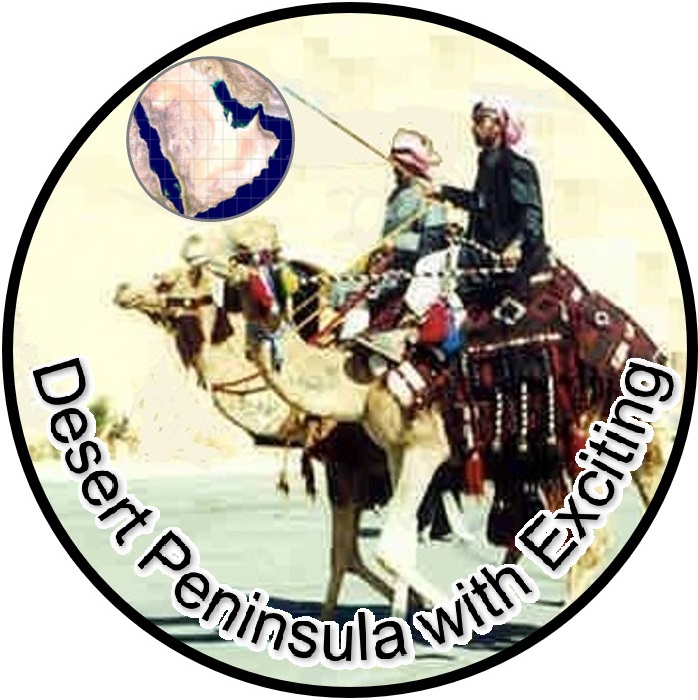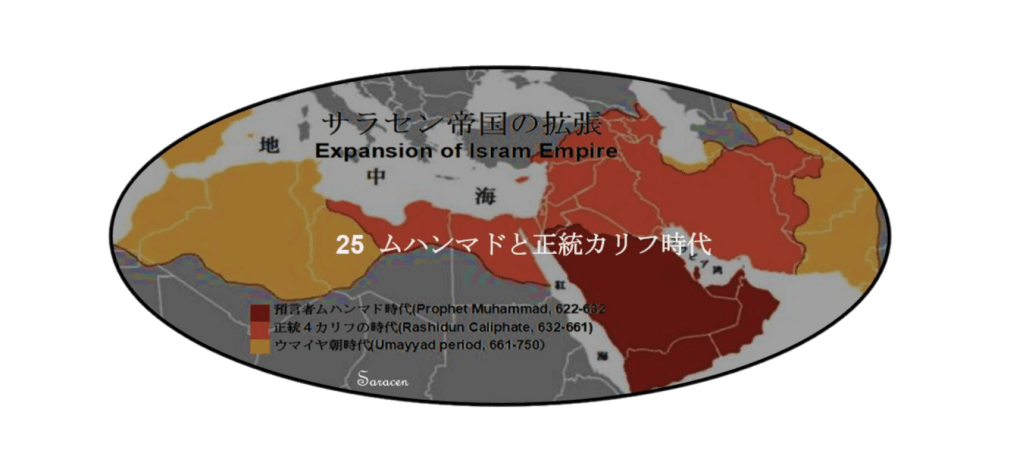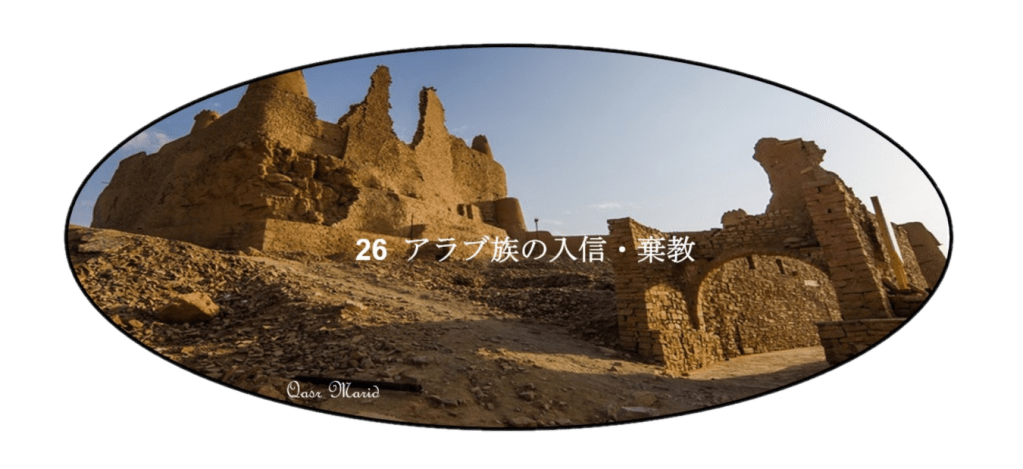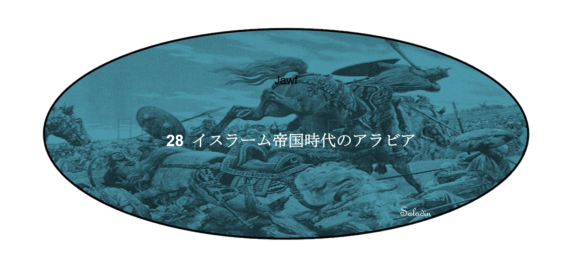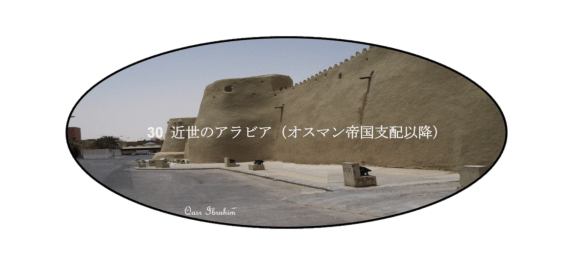Part 4 Travel the peninsula after the birth of Islam
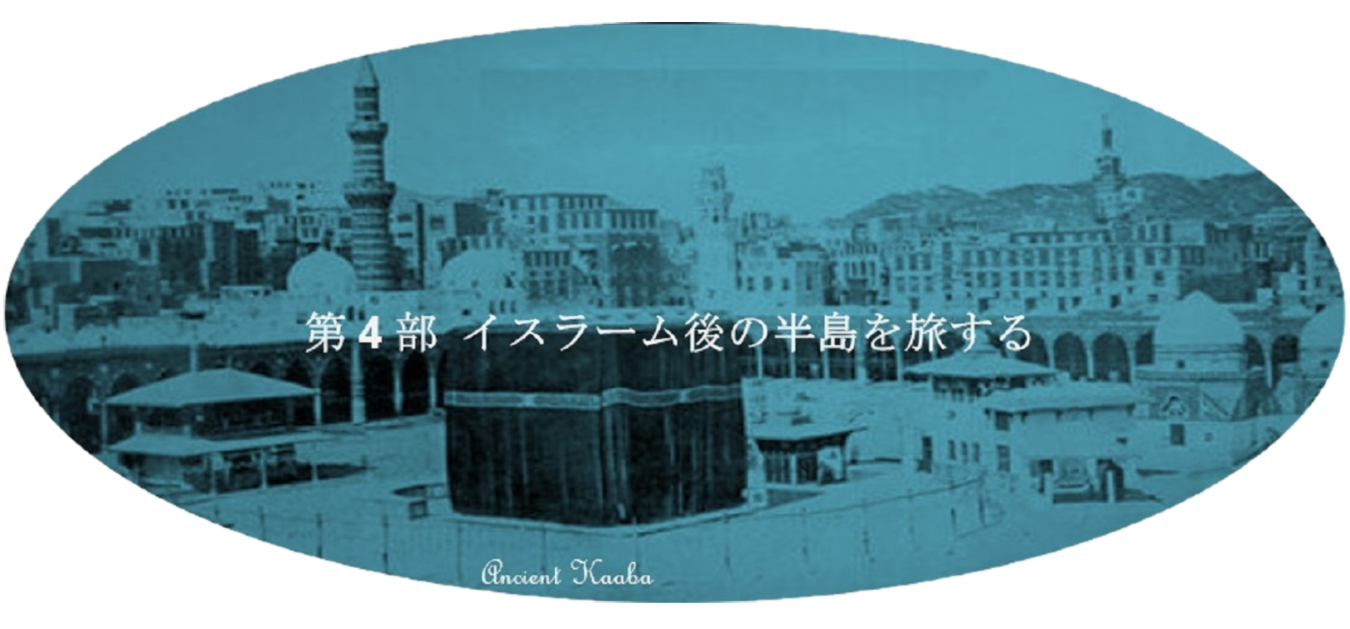
目次(Index)
まえがき
Introduction
第4部ではムハンマドが神の啓示を受け、イスラーム伝道を始めて、イスラーム共同体(ウンマ)事実上のイスラーム帝国を樹立してからオスマン帝国の支配の弱まってきた近代以前の大航海時代までについて述べます。
Part 4 describes the period from Muhammad receiving God revelation and beginning his mission to Islam and establishing the Islamic Community (Ummah) de facto Islamic Empire to the Age of Exploration before the modern period. It was the age when the rule of Ottoman Empire was weakening.
アラブ・イスラム教徒の侵略
Arab-Muslim invasion
イスラーム帝国はムハンマドのアラビア半島内統一に続いて、正統カリフ時代に棄教者などを収めながら、その一方でローマ・ペルシア戦争 (54 BC~628 AD)で疲弊し、抵抗する力を失っていた両帝国に対して、イスラーム帝国(632~661)は突然の様に出現し、サーサーン朝ペルシア(226~651)を完全に征服し、東ローマ帝国(ビザンツ帝国)(330/395~1453)領土に大きく拡大しました(アラブ・イスラム教徒の侵略)。
Following Muhammad’s unification of the Arabian Peninsula, Islamic Empire (632~661) suddenly emerged against both Roman Empire and Sassanid Persian Empire. The both Empires were exhausted by the Roman–Persian Wars (54 BC~ 628 AD) and had lost the power to resist. Islamic Empire completely conquered Sassanid Persia (226~651) and greatly expanded the territory of Eastern Roman Empire (Byzantine Empire) (330/395~1453) (Arab-Muslim invasion).
3カリフ鼎立
Three caliphs opposing one another
イスラーム帝国の版図はアラビア半島からレヴァント、コーカサス(カフカース)、北アフリカ、イラン高原、中央アジアへとその版図が拡大はしました。イスラーム帝国は、ウマイヤ朝(661~750) 引き継がれ、その後、アッバース朝(750~1258)に交代しました。ウマイヤ朝の一部はイベリア半島に逃れて後ウマイヤ朝(756~1031)を樹立しています。アッバース朝はその最盛期には、その版図は大西洋側のマグリブから東は遠く中央アジアに及びました。しかし、奴隷の反乱などで、権威を大きく傷つけられ、衰退し、10世紀にはファーティマ朝や後ウマイヤ朝もカリフを称し、3カリフが鼎立しました。
Islamic Empire expanded from the Arabian Peninsula to the Levant, Caucasus, North Africa, Iranian Plateau, and Central Asia. Islamic Empire was succeeded by Umayyad Caliphate (661~750) and then by Abbasid Caliphate (750~1258). Some of Umayyad Caliphate fled to the Iberian Peninsula and later established Umayyad dynasty of Córdoba (756~1031). Abbasid Caliphate stretched, at its peak, from the Maghreb on the Atlantic side to the Central Asia as its east end. However, due to slave revolts, etc., their authority had been greatly damaged and declined, and in the 10th century, Fatimid Caliphate and Umayyad dynasty of Córdoba also called themselves caliphs, and three caliphs were established opposing one another.
十字軍とアイユーブ朝
Crusades and Ayyubid dynasty
また、1071年頃にはイスラーム世界の支配もセルジューク朝(1037~1194)によって奪われました。セルジューク朝によるアナトリアへの侵略が、西ヨーロッパに「トルコ人が聖地を占拠してキリスト教徒の巡礼を妨害している」という風評を呼び起こし、東ローマ帝国のアナトリア領土奪回のために、1096年に第一回十字軍が編制させました。13世紀後半までには7回に渡って十字軍遠征は行われましたが、次第に本来の目的よりも現実的利益が優先されるようになりました。十字軍遠征に対抗したイスラーム軍を指導したのが、ファーティマ・カリフ朝(909~1171)を引き継いだアイユーブ朝 (1169~1249)でした。
Also, around 1071, the rule of the Islamic world was taken by Seljuk Sultanate (1037~1194). Seljuk invasion of Anatolia aroused rumors in the Western Europe that Turks were occupying holy places and interfering with Christian pilgrimages, and First Crusade was organized in 1096 purposing to retake the Anatolian territory. By the late 13th century, seven Crusades had taken place, but pragmatic interests increasingly took precedence over their original objectives. It was Ayyubid dynasty (1169-1249), which succeeded Fatima Caliphate (909-1171), that led Islamic army against Crusades.
アッバース朝亡命政権とマムルーク朝
Exiled Abbasid regime and Mamluk Sultanate
アッバース朝は、1258年にモンゴル帝国軍によってバグダードを攻略され、カリフを殺害されて滅びました。アッバース朝の一部はエジプトに逃れ、アイユーブ朝を引き継いだマムルーク朝 (1250~1517) に庇護されて、その後も250年カリフを名乗りましたが、1517年にアッバース朝がオスマン帝国に滅ぼされたのに伴い、消滅しました。
Abbasid Caliphate was destroyed in 1258 when Mongol troops captured Baghdad and killed Caliph. Part of Abbasid Caliphate fled to Egypt and was protected by Mamluk Sultanate (1250~1517), which succeeded Ayyubid Caliphate. This remnant of Abbasid dynasty claimed to be Caliph for 250 years, but it disappeared when Mamluk Sultanate was destroyed in 1517 by Ottoman Empire.
オスマン帝国
Ottoman Empire
オスマン帝国 (1299~1922)は、トルコ系イスラーム国家で、ビザンチン帝国 (395 ~1453)の衰微に乗じてアナトリア(小アジア)西部に建国されました。この国家は地中海周辺のアラブ諸地域、バルカン半島をも支配下におき、アッバース朝(750 ~1258)滅亡後のイスラーム世界の覇者として君臨しました。1453年にビザンチン帝国を征服してコンスタンチノープルに遷都しました。16世紀の頃が最盛期で領土は西アジア・北アフリカ・バルカン半島にまたがっていましが、17世紀末から衰退に向かいました。この時期、アラビア半島も内陸部のナジュドを除いて、オスマン帝国の属領となるか、オスマン帝国に従属していました。
Ottoman Empire (1299~1922) was a Turkish-Islamic state founded in western Anatolia (Asia Minor) with the decline of Byzantine Empire (395~1453). This state also controlled the Arab regions around the Mediterranean, and Balkans, and reigned as the ruler of the Islamic world after the fall of Abbasid Caliphate (750~1258). In 1453, Ottoman Empire conquered Byzantine Empire and moved its capital to Constantinople. Its peak was in the 16th century, when its territory spanned the West Asia, North Africa and Balkans, but It declined from the end of the 17th century.
During this period, the Arabian Peninsula also became the dependent territories of Ottoman Empire or was subordinate to it, with the exception of Najd in the interior.
交易路
Trade routes
アラビア半島では原産の乳香、没薬やデーツなど僅かな産物を除けば、その富の源泉は交易に大きく頼っていました。主な交易路は紅海の航路と沿岸の隊商路、アラビア半島を縦断するさまざまな隊商路それにアラビア湾の航路でした。通商路は、ローマ帝国、初期イスラム帝国、マムルーク朝の影響下では紅海航路や紅海沿岸隊商路が主流で、サーサーン朝ペルシアやオスマン帝国の影響下ではアラビア湾航路が主流となりました。アラビア半島を縦断する隊商路は、どちらの場合もそれなりに使われていました。
In the Arabian Peninsula, except for a few commodities such as native frankincense, myrrh and dates, the source of its wealth depended heavily on trade. The main trade routes were the Red Sea Route and the Red Sea Coastal Caravan Route, the various Caravan Routes across the Arabian Peninsula and the Arabian Gulf Route. As far as the influence under Roman Empire, Early Islamic Empire as well as Mamluk Sultanate, the Red Sea Route and the Red Sea Coastal Caravan Route were the mainstream, but the influence under Sassanid Persia and Ottoman Empire, the Arabian Gulf Route became the mainstream. The various Caravan Routes across the Arabian Peninsula were used in both cases to a certain extent.
西洋の大航海時代
Age of Discovery in the West
西洋では15 世紀から 17 世紀にかけては、大航海時代であり、1498年5月20日にヴァスコ・ダ・ガマがインドのカリカットに到着してインド航路を開拓し、ポルトガル海上帝国の基礎が築かれました。1503年にソコトラ島に要塞を建設して強化したインド航路は、香料取引を主体とするインド交易の既存勢力であるイスラーム船団と激しく争うこととなりました。1509年2月のディーウ沖海戦でイスラーム船団側のグジャラート・スルターン朝、マムルーク朝(ブルジー・マムルーク朝、およびカリカットの領主ザモリンの連合軍がポルトガル海上帝国に敗北して、覇権を奪われました。さらに1515年ポルトガル艦隊がホルムズを攻略して要塞を設けてアラビア湾貿易も支配下に置いたため、その後のイスラーム船団は、密貿易に近い形での交易しかできなくなりました。
In the West, the period from the 15th to the 17th century was the Age of Discovery, and on May 20, 1498, Vasco da Gama arrived in Calicut, India, opened up the Indian route and laid the foundations of Portuguese maritime empire. In 1503, the Indian route, fortified by the construction of a fortress on the island of Socotra, came into fierce competition with the Islamic convoys, an existing power in the Indian trade mainly engaged in the perfume trade. In the Battle of Diu in February 1509, the combined forces of the Islamic fleets of Gujarat Sultanate, Mamluk Sultanate (Burji Mamluks), and Zamorin lord of Calicut were defeated by Portuguese Maritime Empire and lost their hegemony. Furthermore, in 1515, the Portuguese fleet captured Hormuz, established a fortress, and took control of the Arabian Gulf trade, so that the Islamic convoys could only trade in a form close to smuggling.
ポルトガル海上帝国
Portuguese Maritime Empire
ポルトガル海上帝国は、インド航路の要衝であったマスカットを、1507年から1650年にかけて支配し、ソハール等のマスカット沿岸部の城砦を占領していましたが、17世紀半ばにオマーン海洋帝国 (1696~856) によって、追放されました。17世紀にはいると、1622年にイギリスとサファヴィー朝(1501~1736) との連合艦隊がホルムズに侵攻してポルトガル勢力を駆逐しました。そして、イギリス東インド会社がポルトガル海上帝国と入れ替わって、アラビア湾貿易の覇権を奪いました。ホルムズからアラビア湾の交易中心に変わったバンダレ・アッバースにはオランダとフランスも東インド会社商館を置くようになりました。
Portuguese Maritime Empire ruled Muscat, a key point on the Indian route, from 1507 to 1650, and occupied the coastal citadels such as Sohar. However, it was expelled by Omani Maritime Empire (1696~856) in the middle of the 17th century.
In the 17th century, in 1622, a combined fleet of England and the Safavid dynasty (1501-1736) invaded Hormuz and drove out the Portuguese forces. British East India Company replaced Portuguese Maritime Empire and took control of the Arabian Gulf trade. In Bandar Abbas, which had been transformed from Hormuz into a trading center in the Arabian Gulf, Dutch and French also set up East India Companies’ trading posts.
この時代のアラビア半島に存立した主な王朝
Main dynasties existed in the Arabian Peninsula in these ages
イスラーム帝国が樹立してから大航海時代にかけてアラビア半島に存立した主な王朝は次の通りです;
The main dynasties that existed in the Arabian Peninsula from the establishment of Islamic Empire to Age of Discovery are as follows;
| ラシード朝(893~c.1300)からザイド朝(1597~1962)まで続いたイエメンのザイド・イマーム政権(897~1962) | Zayd Imamate (897~1962) in Yemen that lasted from Rashid Dynasty (893~c.1300) to Zaidi Kingdom (1597~1962). |
| アッバース朝から派遣された将軍の築いたジヤード朝(ズィヤード朝)(819~1018)とそれに続く黒人政権ナジャーフ朝(1022/1050~1158) | Ziyadid Dynasty (819~1018) founded by a general dispatched by Abbasid Caliphate, and the subsequent black regime of Najahid Dynasty (1022/1050~1158). |
| 北部イエメンの大部分を支配したスライフ朝(1047~1138) | Sulayhid Dynasty (1047~1138), which ruled most of northern Yemen. |
| イスマーイール派霊感であったカルマト派がハサーを中心に樹立したカルマト派政権(899~1077) | Qarmat regime (899~1077) established by Qarmat Sect (one of the Ismaili Inspiration) centered at Al-Hasa (Al-Ahsa). |
| カルマト派を打ち破ったハサーのウユーニード朝(1076~1235)、それに続く、ウスフーリード朝(1253~1320/1440)およびジャルワーン朝 (1305/1310~1417/1487) | Uyunid Dynasty (1076~1235) of Al-Hasa (Al-Ahsa) defeated Qarmat Sect, and Uyunid Dynasty was followed by Usfurids Dynasty (1253~1320/1440) and Jarwanid Dynasty (1305/1310~1417/1487). |
| バハレイン島を含むアラビア湾西岸をからナジュドにも支配が及んでいたジャブリード朝(1417/1440~1524) | Jabrids Emirate (1417/1440~1524), which extended its rule from the western coast of the Arabian Gulf including Bahrain to the inland Najd. |
| アラビア湾入り口の交易の要であったホルムズ王国(オルムス王国)(10/11C.~1622) | Kingdom of Ormus known as Hormuz (10/11C.~1622), which was the key of trade at the entrance of the Arabian Gulf. |
| メッカのシャリーフの地位を維持したバヌー・カターダ王朝(1201~1925) | Banu Qatada dynasty (1201~1925), which maintained the status of Sharif in Mecca. |
| イエメンのテュルク系スンナ派のラスール朝 (1229~1454) | Rasulid Dynasty (1229~1454) of the Turkic Sunni, who ruled Yemen. |
| ポルトガルの侵略で滅びたオマーンのナバーニ朝(1154~1624) | Nabhani Dynasty (1154~1624) of Oman destroyed by Portuguese invasion. |
| ポルトガルを追放したヤアーリバ朝(1624~1742)からブーサイード王朝(1744~1856)に続くオマーン海洋帝国(Omani Empire) (1696~1856)等。 | Omani Maritime Empire (1696~1856) established by Ya’rubid Dynasty (1624~1742), which expelled Portuguese from Oman, and It was followed by Al Busaid Dynasty (Al Said Dynasty) (1744~1856). |
